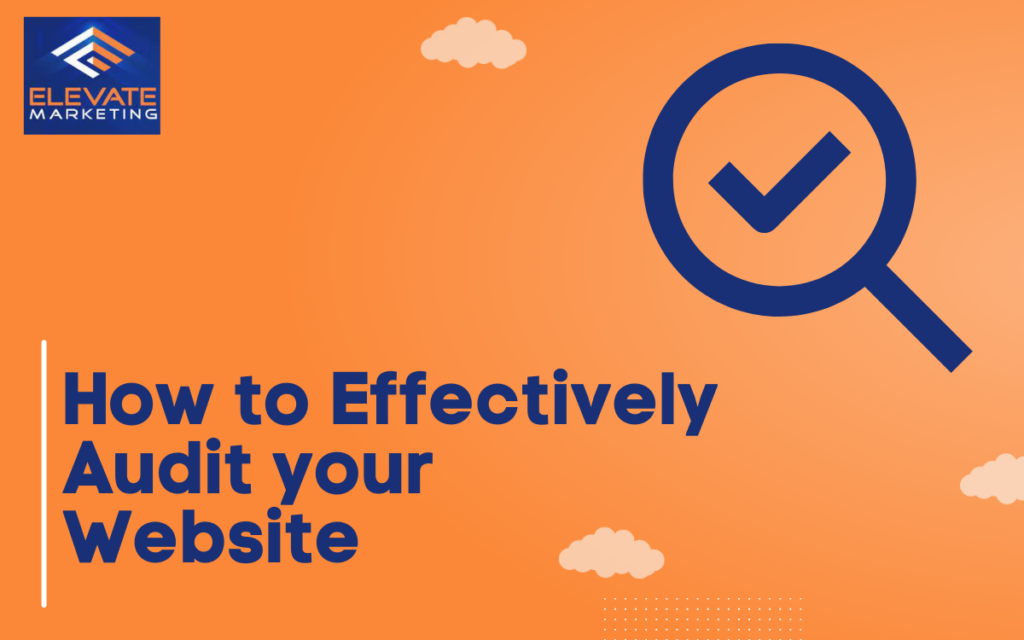Your website is often the first point of contact between your business and potential customers. Ensuring that it is performing at its best is not just a matter of convenience but a crucial aspect of your online presence. A website audit is the key to keeping your site relevant, optimising it for search engines, improving user experience, and ultimately driving better results. In this post, we’ll walk you through the steps on how to effectively audit your website.
Why Should You Audit Your Website?
Before we dive into the how-to, let’s explore why website audits are essential:
- Optimise Performance: A well-audited website runs faster and smoother, keeping visitors engaged and reducing bounce rates.
- Improve SEO: Identifying and fixing SEO issues can significantly boost your website’s visibility in search engine results.
- Enhance User Experience: A user-friendly website attracts and retains visitors, encouraging them to explore further and convert into customers.
- Stay Secure: Regular audits help identify and address security vulnerabilities, protecting your website and user data.
- Achieve Business Goals: An efficient website supports your overall business objectives, such as generating leads, increasing sales, or growing your online presence.
Now that you understand the importance of website audits, let’s dive into how you can effectively perform one:
Step 1: Define Your Objectives
Before you start auditing your website, it’s crucial to define your objectives. What are you trying to achieve with this audit? Are you looking to improve SEO, enhance user experience, or fix technical issues? Clearly defining your goals will guide the entire auditing process.
Step 2: Conduct a Technical Audit
A technical audit concentrates on the underlying components of your website, encompassing performance assessment to identify load time improvements, ensuring mobile responsiveness for an optimal user experience, improving errors to facilitate proper search engine reach, and confirming website security.
Step 3: Evaluate Content Quality
Content is king in the online world, and it’s imperative to evaluate your website’s content for its pertinence, engagement, and value to your audience. This assessment involves analysing keywords and their alignment with your target demographic, maintaining content fresh by eliminating outdated information, and addressing any concerns related to duplicate content, as such issues can have adverse effects on your website’s search engine optimisation (SEO) performance.
Step 4: Check SEO Elements
Enhancing your website’s search engine optimisation (SEO) is vital to bolster its visibility. This optimisation involves a thorough examination of on-page elements, including title tags, meta descriptions, header tags, and image alt text. Furthermore, monitoring keyword rankings and organic traffic through tools like Google Analytics and Google Search Console is essential. Evaluate the quality and relevance of your backlinks and take action to eliminate any prejudicial ones to maintain a healthy profile.
Step 5: Analyse User Experience
A superb user experience is essential for retaining website visitors and motivating them to engage. To achieve this, prioritise intuitive and user-friendly navigation, as well as optimising page load times to prevent high bounce rates caused by slow-loading pages. Additionally, confirm that your website is responsive, offering a seamless and engaging experience for users on mobile devices.
Step 6: Test for Security
Establish automated backup systems to ensure regular data protection, fortify your website’s defences by installing security plugins and keeping them updated to ward off potential threats, and ensure the encryption of sensitive data by maintaining an active SSL certificate on your site.
Step 7: Monitor Analytics
Frequently monitoring website analytics is indispensable for gaining insights into user behaviour and making well-informed decisions. Utilise Google Analytics to assess user traffic, behaviour, and conversion rates, while also measuring the success of your website based on your goals. Use tools to track user interactions, helping you identify areas for data-driven improvements to enhance the overall user experience.
Step 8: Create an Action Plan
After completing your website audit, compile a detailed action plan. Prioritise tasks based on their impact and feasibility, and set a timeline for implementation. Assign responsibilities to team members if necessary.
Step 9: Implement Changes and Continuously Monitor
Put your action plan into motion, addressing issues and making improvements as outlined. Remember that a website is a dynamic entity, so ongoing monitoring and optimisation are crucial for long-term success.
Regularly auditing your website is not only a best practice but a necessity for success. It ensures that your site is performing at its best, engaging visitors, and achieving your business goals. By following this comprehensive guide and staying committed to ongoing improvement, you can keep your website in top shape and see the rewards of a strong online presence.


